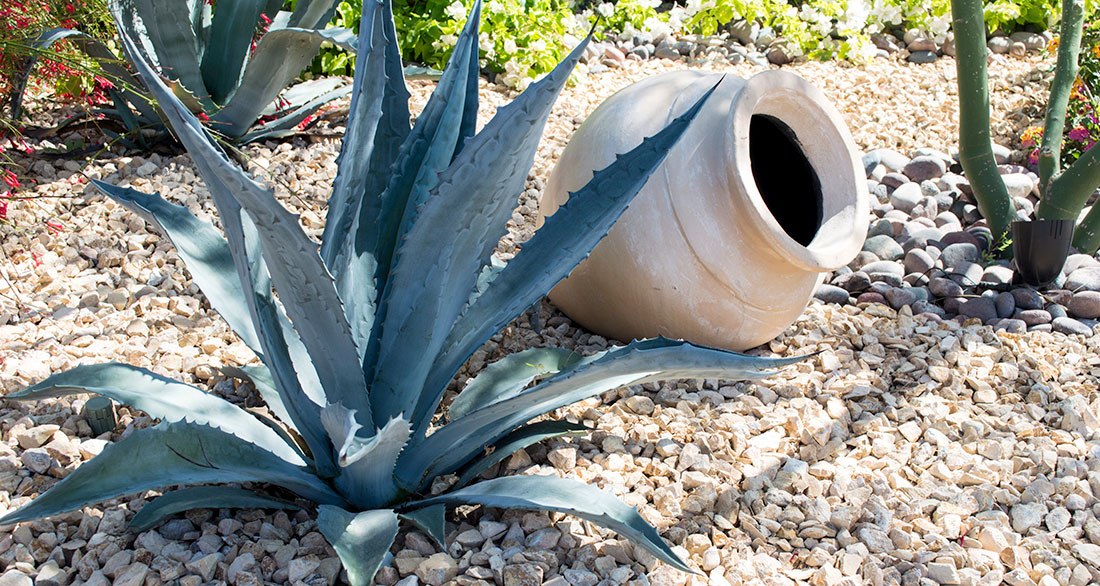MANAGING WATER
How water is managed can have has a significant effect on plant health as well as pest infestations. This Section contains a comprehensive guide to proper plant watering including how much, how often and how different soil types may effect plant watering. While it may be possible to maintain plants with a high water requirement in hot areas of the County, it is strongly advised that they be replaced with plants better suited to the local climate, including with drought-tolerant native plants.
Turf (grass, lawns, etc.) has an exceptionally high water requirement, and, if practicable, should be replaced at County facilities unless it is somehow essential to the character of the facility, or to its purpose (playground, park, etc.). The following information on landscape watering can seem a little intimidating at first, but don’t give up! It may not be as complicated as it looks. The Los Angeles County, Plant Pathologist is an irrigation/water management expert and prepared this section on water management. He is also available to directly assist County departments with their irrigation needs. He can be reached at the contact information in Appendix H.
How to Irrigate a Landscape or Home Garden
There are several basic concepts that need to be understood in order to correctly irrigate a landscape or home garden. These concepts include evapotranspiration rate, crop coefficients, application rate, field capacity, and the permanent wilting point. When developing a watering schedule, it is also important to take into consideration the soil texture (clay, loam or sand), and the prevailing weather conditions for the location. When irrigating landscapes and gardens, the goal is to water the soil to the depth of the root zone for the plants that are being irrigated.
Evapotranspiration
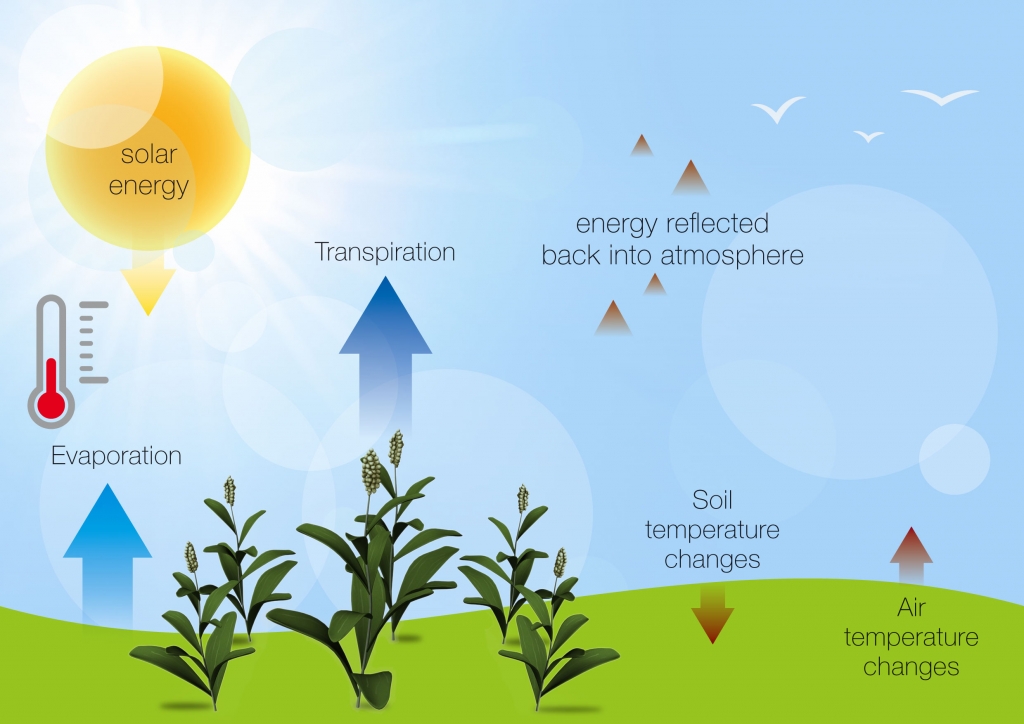
The reference evapotranspiration rate (ET) is the total water loss from the soil by transportation through the plant and by evaporation from the soil surface. Reference evapotranspiration rate is defined as the water loss from 4-7 inch tall cool season grass, in an open field, that is not water stressed. ET is measured in inches just was we measure rain fall and the rates are given is inches per day, per week or per month. ET rates vary by season and location. Average ET rates along the coast in S. CA are 0.75 inches per week in spring and fall, 1.5 inches per week in the summer and 0.5 inches per week in the winter. Average ET rates in S. CA hot inland valleys are 1 inch per week in the spring and fall, 2 inches per week in the summer and 0.5 inches per week in the winter. Average ET rates in S. CA deserts are 1.5 inches per week in the spring and fall, 3 inches per week in the summer and 0.5 inches per week in the winter.
Crop Coefficient
The crop coefficient is the percentage of ET a plant species needs. The crop coefficient for citrus is 66%. This means that citrus grown in a hot inland valley need 0.66 inches per week in the spring/fall and 1.32 inches per week in the summer. The crop coefficient for cool season grasses is 80% and 60% for warm season grasses. This means that a cool season grass such as a tall fescue, growing in a hot inland valley, needs 0.8 inches per week in the spring/fall and 1.6 inches per week in the summer.
Shrubs and trees can vary tremendously in their drought tolerance and crop coefficient. The crop coefficients for landscape plants have not been as extensively researched as those for agricultural crops. Very low water use plants have crop coefficients below 10%, low water use plants have crop coefficients in the 10% to 30% range, moderate water use plants have crop coefficients in the 40% to 60% range, and high water use plants have crop coefficients in the 70% to 90% range. Some plant species may have low water use needs in a cooler region and moderate water use needs in a warmer region.
Application Rate
Although there are several ways to apply irrigation water the most common application of irrigation water uses sprinklers. Sprinklers allow for the calculation of the application rate in inches per hour. The easiest way to determine the application rate for a sprinkler system is to place straight-sided cups (tuna cans, coffee cups) in the area where the sprinklers apply the water. Turn on the sprinklers for 15 minutes and then measure the amount of water in each cup. Add the depth of water in each cup, divide by the number of cups and multiply by 4 to determine the application rate in inches per hour. Typical lawn sprinklers apply water at approximately two inches per hour, although this can vary considerably. Two inches per hour is a very high application rate as most soils will not absorb water faster than 0.5 inches per hour. It is best to apply water at low application rates to avoid runoff. Older sprinkler systems can be converted to low application rate sprinkler heads that will apply water at rates lower than 0.5 inches per hour.
When water is applied using drip irrigation, soaker hoses or by filling water basins around trees and shrubs it is difficult to determine application rates in inches per hour. When water is applied using the above techniques the depth of water penetration into the soil should be determined by probing the soil with a metal rod or use a sampling tube. Push a metal rod into the soil after applying the irrigation water until it is difficult to push it any further. The rod will penetrate to the same depth as the water. Sampling tubes are used to collect a column of soil which can be examined to determine the depth that applied irrigation has penetrated.
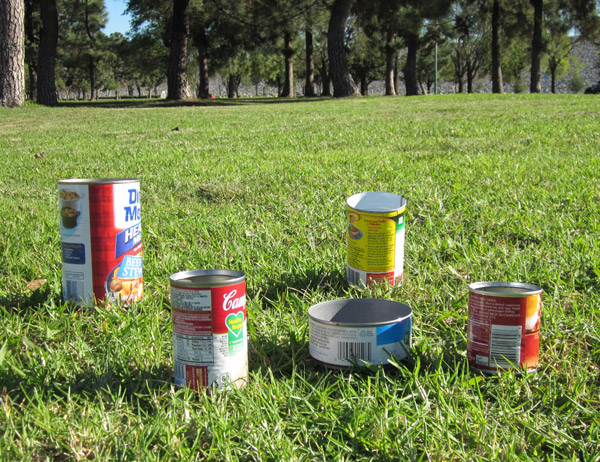
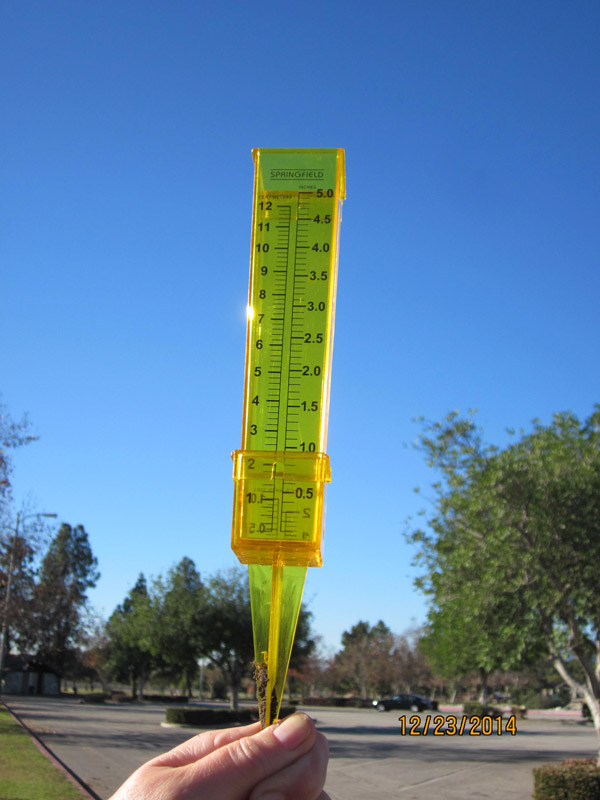
Depth of Irrigation
The goal, when irrigating landscapes and gardens, is to have the water penetrate to the depth of the root zone. The depth that irrigation water penetrates the soil is dependent on the soil texture and the number of inches applied. One inch of water applied to sandy soil will penetrate to about 12 inches. One inch of water applied to a loam soil will penetrate to about 7 inches. One inch of water applied to a clay soil will penetrate to about 4-5 inches.
Rooting Depth
Plants are not all rooted to the same depth. Lawns are typically rooted to a depth of between 6-12 inches. Small and medium size shrubs are typically rooted to a depth of 18 to 24 inches. Large trees and shrubs are typically rooted to a depth of 24 to 36 inches.
Watering Lawns
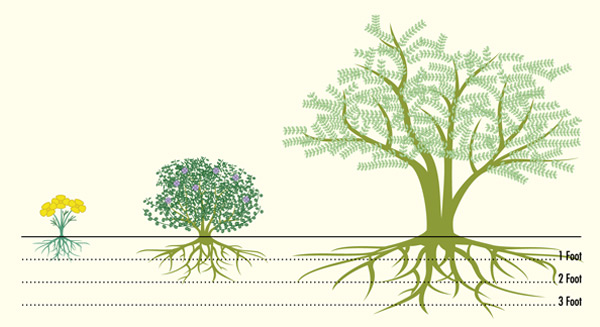
Lawns have shallow roots in the upper 6-12 inches of the soil. One half inch to one inch of water will wet the soil to the depth of the root zone. The upper 6-12 inches of soil dries out quickly and water has to be applied frequently to prevent wilting and drought stress in lawns. In the spring and fall, lawns will need to be watered once or twice a week. During the hot summer months, lawns will need to be watered two to three times per week. Drought tolerant grasses such as Bermuda and St. Augustine have crop coefficients of 60 %. Cool season grasses such as tall fescue and Kentucky blue grass have crop coefficients of 80%. This means Bermuda grass will use 25% less water than a tall fescue.
Watering Small to Medium Sized Shrubs
Small and medium size shrubs will require enough water to penetrate to 18-24 inches. This will require 2-3 inches of water. Water that reaches to a depth of 24 inches will remain in the soil, and be available to the plants roots, longer than water that penetrates to a lesser depth. This means you do not need to water as often when watering small to medium sized shrubs. Generally, shrubs of this size can be watered every two weeks in the spring and fall and once a week in the summer.
Watering Large Shrubs, Large Trees, and Fruit Trees
Most fruit trees and large trees will require enough water to penetrate to a depth 24-36 inches. This will require 3-4 inches of water. Water that reaches to a depth of 24-36 inches will be available to the tree for two to four weeks depending on the season. Large shrubs, large trees and fruit trees should be watered once a month in the spring and fall and every 2-3 weeks in the summer. Tropical fruit trees such as avocado will require more frequent irrigation than more drought tolerant fruit trees such as Citrus or Pomegranate. Deciduous fruit trees, such as Peach, Nectarine and Plum, have a lower crop coefficient in the spring (0.5) when they have few leaves and a higher crop coefficient (0.95) in the summer when they are fully leafed out.
How Soil Affects Watering
Soil is composed of mineral particles, living and dead organic matter and pore spaces containing water and air. Pore spaces can be as much as 50% of the soil volume. The mineral particles are defined by their size. Clay particles are microscopic at less than 1/125,000 of an inch. Silt particles are between 1/125,000 of an inch and 1/500 of an inch. Fine sand particles are between 1/500 of an inch and 1/250 of an inch, medium sand up to 1/50 of an inch and coarse sand up to1/12 of an inch. The relative proportions of the mineral particles determine the soil texture. When a soil has been fully irrigated and allowed to drain it is said to be at Field Capacity. Field Capacity is the amount of soil moisture or water content held in the soil after excess water has drained away and the rate of downward movement has decreased. The Permanent Wilting Point is when the soil has dried to the point that plants wilt and they will not recover unless water is applied to the soil.
Soil Pores
Pores vary in size and are classified as macropores, mesopores or micropores. Macropores are too large to have any significant capillary force. Macropores are full of air at field capacity. The mesopores are those that are full of water at field capacity. Mesopores are also called storage pores because they have the ability to store water that is available for plant use. Micropores are those pores that stay filled with water at the permanent wilting point. The water in micropores is adsorbed to the surface of clay particles and is generally not available to plants without great difficulty.

Soils have many macropores between and within aggregates associated with readily apparent good soil structure

Soil macropores between and within aggregates have declined significantly but are present on close examinations of clods showing a moderate amount of consolidation
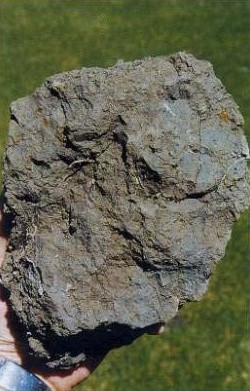
No soil macropores are visually apparent within compact, massive structureless clods. The clod surface is smooth with few cracks or holes, and can have sharp angles
Clay soils have fewer macropores and more micropores. Sandy soils have fewer micropores and more macropores. The result is that clay soils drain slowly and stay wet longer while sandy soils drain quickly and dry out faster. Loam soils have the best distribution of pores, draining well but also retaining water in mesopores that is available for plant use. The time period between irrigation can be extended in clay soil and shortened in sandy soil.
How do you know what kind of soil you have? The publication THE DROUGHT TOLERANT GARDEN, LOS ANGELES COUNTY HANDBOOK[1] has an easy-to-use section on how to identify soil texture by measurement or by feel.
Water Scheduling
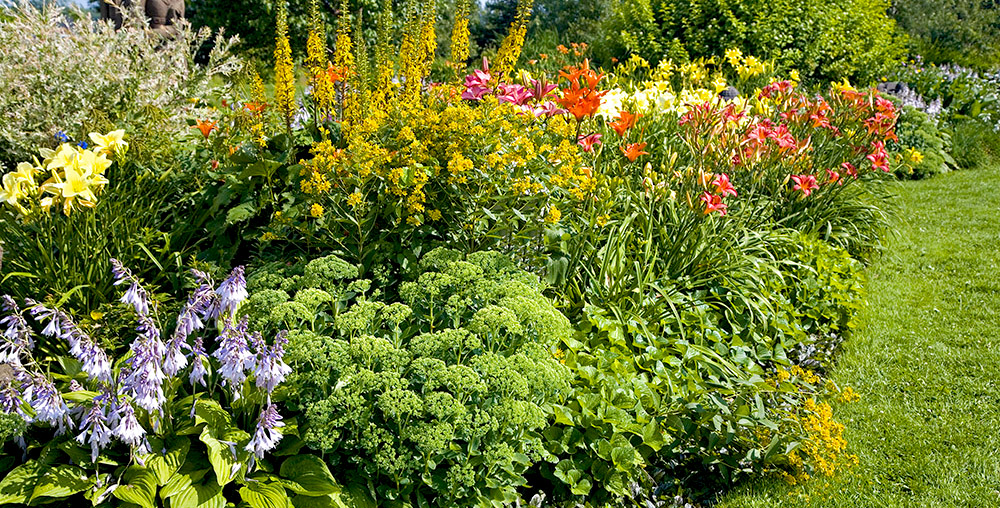
With many different plant species and varying climate conditions in Southern California, water schedules will vary considerably from one garden to another. Low water use shrubs and trees should be irrigated when the accumulated evapotranspiration loss (crop coefficient x ET rate) exceeds 2-3 inches. This can take 1-8 weeks or longer depending on location and the crop coefficient. For example, it would take 8-9 weeks for a low water use tree in a coastal environment to accumulate 2 inches of needed irrigation. Here are some examples of how to water specific plant species in various locations in Southern California.
Cool Season Grasses in a South Coastal Environment
Cool season grasses such as a tall fescue have a crop coefficient of 80%. Coastal areas historically have evapotranspiration rates of 0.75 inches per week in spring and fall and 1.5 inches per week in the summer. A tall fescue growing in Santa Monica would need 0.6 inches of water (80% of 0.75 inches) per week in spring/fall and 1.2 inches of water (80% of 1.5 inches) per week in summer. If the grass is growing in a clay soil, the application frequency could be once a week in spring and fall and twice a week in summer. If the grass was growing in a sandy soil, the application frequency could be twice a week in spring and fall and three times a week in summer. When applying water more than once a week, divide the total amount of water needed per week by the number of applications per week to determine how many inches to apply during each irrigation.
Warm Season Grasses in a South Coastal Environment
Warm season grasses such as Bermuda have a crop coefficient of 60%. Coastal areas historically have evapotranspiration rates of 0.75 inches per week in spring and fall and 1.5 inches per week in the summer. Bermuda grass growing in Santa Monica would need 0.45 inches per week (60% of 0.75 inches) in spring/fall and 0.90 inches per week (60% of 1.5 inches) in summer. If the grass is growing in a clay soil, the application frequency could be once a week in spring and fall and twice a week in summer. If the grass was in a sandy soil, it should be watered twice a week in spring and fall and three times a week in summer. When applying water more than once a week, divide the total amount of water needed per week by the number of applications per week to determine how many inches to apply during each irrigation.
Cool Season Grasses in a Hot Inland Valley
Cool season grasses such as a tall fescue have a crop coefficient of 80%. Hot inland valleys historically have evapotranspiration rates of 1 inch per week in spring and fall and 2 inches per week in the summer. A tall fescue growing in Pasadena would need 0.8 inches of water (80% of 1 inch) per week in spring/fall and 1.6 inches of water (80% of 2 inches) per week in summer. If the grass is growing in a clay soil, the application frequency could be once a week in spring and fall and twice a week in summer. If the grass was growing in a sandy soil, the application frequency could be twice a week in spring and fall and three times a week in summer. When applying water more than once a week, divide the total amount of water needed per week by the number of applications per week to determine how many inches to apply during each irrigation.
Warm Season Grasses in a Hot Inland Valley
Warm season grasses such as Bermuda have a crop coefficient of 60%. Hot inland valleys historically have evapotranspiration rates of 1 inch per week in spring and fall and 2 inches per week in the summer. A Bermuda grass lawn growing in Pasadena would need 0.6 inches per week (60% of 1 inch) in spring/fall and 1.2 inches per week (60% of 2 inches) in summer. If the grass is growing in a clay soil, the application frequency could be once a week in spring and fall and twice a week in summer. The same grass in a sandy soil may need to be watered twice a week in spring and fall and three times a week in summer. When applying water more than once a week, divide the total amount of water needed per week by the number of applications per week to determine how many inches to apply during each irrigation.
Shrubs and Trees in a South Coastal Environment
Shrubs and trees vary greatly in their drought tolerance and crop coefficients. Juniper species have crop coefficients that are low, between 10% and 30% of ET. Bush roses have moderate crop coefficients in the range of 40%-60% of ET. Sword ferns have a moderate crop coefficient in the range of 40% to 60% of ET in southern coastal environments, but have a high crop coefficient in the range of 70% to 90% of ET in hot inland valleys.
Shrubs with low crop coefficients such as Juniper growing along the coast wound need 0.225 inches per week (30% of 0.75 inches) in spring/fall and 0.4 inches per week (30% of 1.5 inches) in the summer. It will take 8 weeks in the spring to accumulate 1.8 inches of needed irrigation during the spring (8 weeks x 0.225 inches per week). A Juniper growing in Santa Monica should be watered 1.8 inches every other month in spring/fall and 1.8 inches once a month in summer.
Large trees with moderate water use requirements (40% to 60% of ET) such as Magnolia (Magnolia grandiflora) would need 0.45 inches per week (60% of 0.75 inches) in spring/fall and 0.9 inches per week (60% of 1.5 inches) per week in summer. Large trees have deep roots and should be water once every 4-8 weeks. A Magnolia grandiflora growing in Santa Monica should be watered 2.7 inches at 6 week intervals in spring/fall and 3.8 inches once a month in summer.
Olive trees have low water use requirements along the coast and in hot inland valleys (10% to 30% of ET). An Olive tree growing in Santa Monica needs 0.225 inches per week (30% of 0.75 inches) in spring/fall and 0.4 inches per week (30% of 1.5 inches) in the summer. An Olive tree should be watered 1.8 inches every other month in spring/fall and 1.8 inches once a month in summer based on the crop coefficient and ET rate for coastal areas in Southern California. In this case the 1.8 inches applied would not be enough to irrigate the entire root zone and should be increased to at least two inches or even three inches to fully irrigate the root zone.
Shrubs and Trees in a Hot Inland Valley
The historical evapotranspiration rates for hot inland valleys are 1 inch per week in spring and fall and two inches per week in summer. Using the same trees from above, a Magnolia grandiflora growing in Pasadena would need 0.6 inches per week (60% of 1 inch) in spring/fall and 1.2 inches per week (60% of 2 inches) per week in summer. The schedule would be to apply 2.4 inches once a month in spring/fall and 2.4 inches every two weeks in summer. Since 2.4 inches is less than what is needed to fully irrigate the root zone it would be best to increase the amount of water to 3 inches to fully irrigate the root zone.
An Olive tree in Pasadena would require 0.3 inches per week (30% of 1 inch) in spring/fall and 0.6 inches per week (30% of 2 inches) in summer. The schedule would be to apply 2.4 every other month in spring/fall and 2.4 inches once a month in summer. As 2.4 inches is not enough to fully irrigate the root zone it should be increased to 3 inches to fully irrigate the root zone.
Adjusting Irrigation to Meet Local Conditions
Using historical evapotranspiration rates and crop coefficients provides close approximations as to how much water a tree, shrub or lawn needs. The amounts of irrigation determined using evapotranspiration rates and crop coefficients should be adjusted to take into account locale conditions. For example, lawns that receive morning sun but are shaded in the afternoon will use less water than lawns that receive full sun all day. A lawn that gets sun all day may need to be watered 0.5 inches three times a week, whereas a lawn that gets shaded in the afternoon may only need 0.5 inches twice a week. The same is true for shrubs that are shaded in the afternoon versus those that are in the full sun all day.
Evapotranspiration rates and crop coefficients provide guidelines for landscape irrigation. Every garden or landscape will use slightly different amounts of water at different intervals depending on site specific conditions. These are guidelines for landscape managers and homeowners to use to avoid either wasting water by applying too much too often or damaging landscapes through drought stress by applying too little water and not often enough.
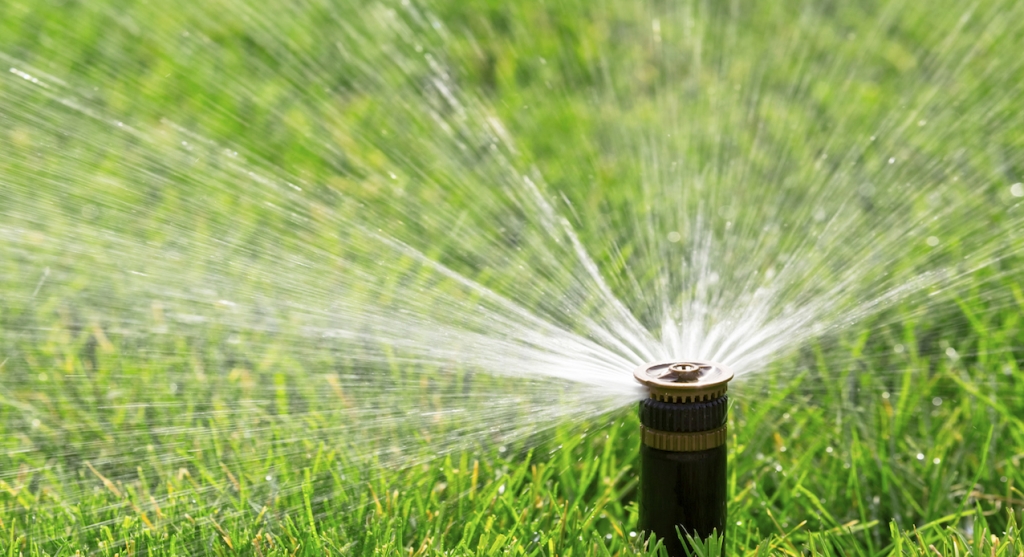
[1 ref] BKI and Green Gardens Group, The Drought Tolerant Garden, Los Angeles County Handbook, Department of Regional Planning.


